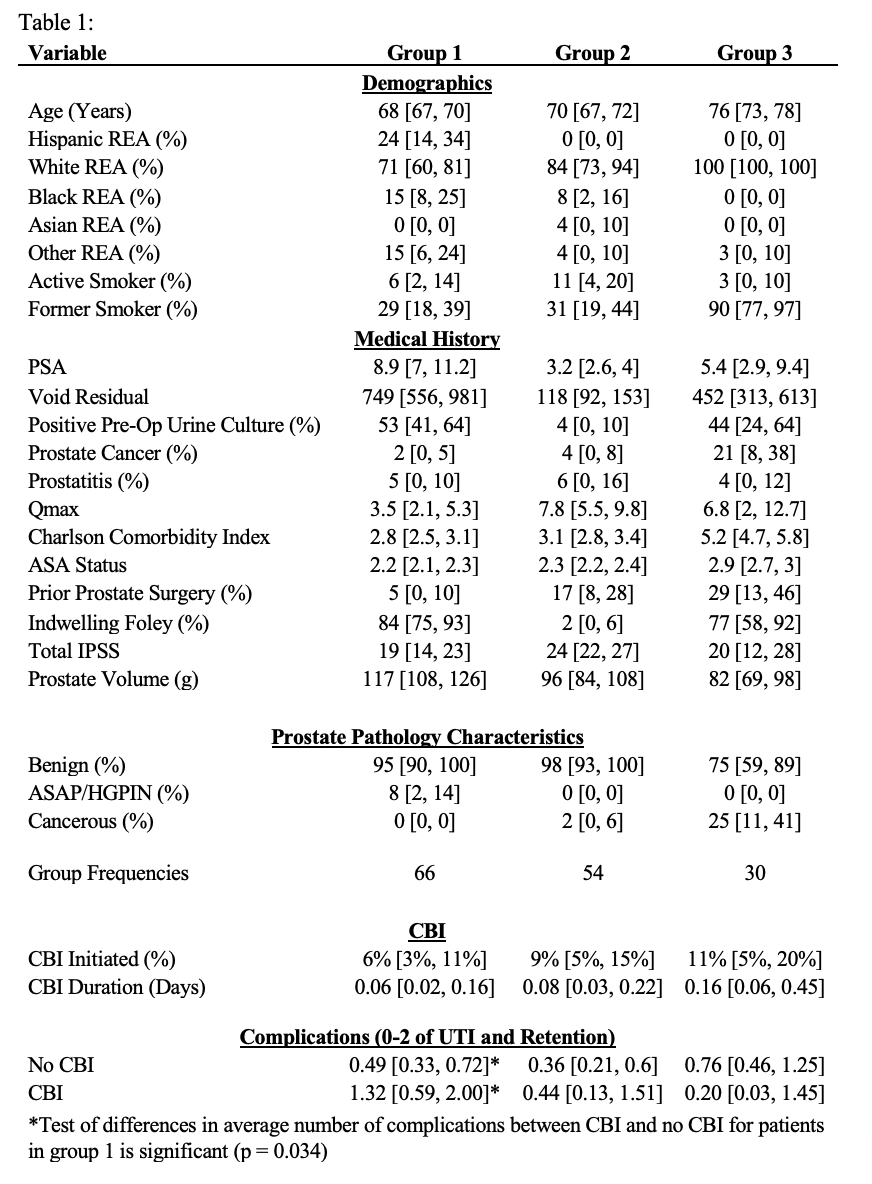Back to 2025 Abstracts
Preoperative and Perioperative Predictors of Adverse Patient Outcomes after Thulium Laser Enucleation of the Prostate
Daniel Sanford, MD1, Suhas Penukonda, MD
1, Henrik Hector, BS
1, Anna Ochsner, MD
1, Raymond Chiang, BS ScM
1, Jarrett Noakes, BS
1, Joshua Ray Tanzer, PhD
2, Taylor Braunagel, MS
1, Samuel Eaton, MD
1, Samuel Eaton, MD
1.
1Division of Urology, Warren Alpert Medical School of Brown University, Providence, RI, USA,
2Brown University Health Biostatistics, Epidemiology, Research Design, Informatics, Providence, RI, USA.
IntroductionThulium Laser Enucleation of the Prostate (THULEP) is a commonly offered procedure for men with enlarged prostates. Post-operative complications after THULEP include hematuria requiring continuous bladder irrigation (CBI), urinary retention, and urinary tract infection (UTI). We studied pre-operative and intraoperative risk factors that may be predictive of these adverse outcomes.
Materials and MethodDemographic, pre-operative, and peri-operative data was abstracted for 150 consecutive THULEP cases at our institution. A cluster analysis was used to identify similar groups of patients in the data in an effort to maximize a limited dataset. A regression analysis was implemented to assess if patients with post-operative hematuria who required CBI were more likely to experience post-operative complications including UTI or urinary retention.
ResultsThe cluster analysis identified three distinct groups of patients which are presented in Table 1. The first cluster represented patients who tended to be younger with larger prostates whereas the third cluster included patients who were distinctly older and had worse overall health status. Among all patients, the rate of patients requiring CBI was fairly low (6%-11% on average), and there were no differences in frequency of CBI between clusters (
p > 0.05). We found that patients who were initiated on CBI had significantly higher rates complications including UTI or urinary retention (no CBI: M = 0.49, 95% CI [0.33, 0.72]; CBI: M = 1.32 [0.59, 2.00];
p = 0.034).
ConclusionsAdverse outcomes are seen after THULEP procedure including hematuria, infection, and urinary retention. In our cohort of patients, 6-11% required CBI post-operatively. Patients who required CBI postoperatively were found to have higher frequency of complications including UTI or urinary retention which may be related to hospitalization versus outpatient procedure.

Back to 2025 Abstracts
